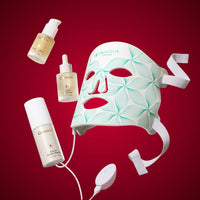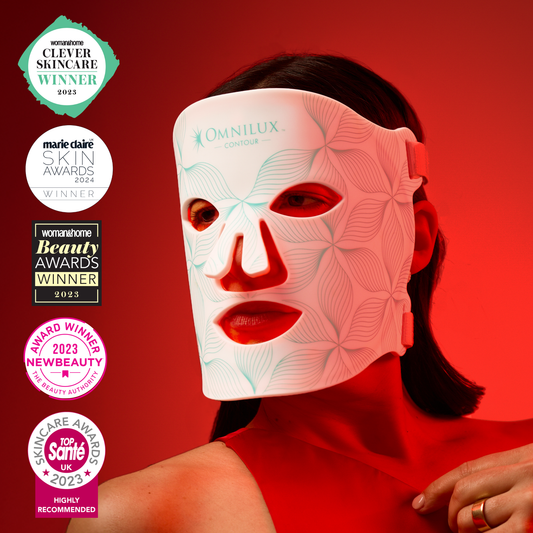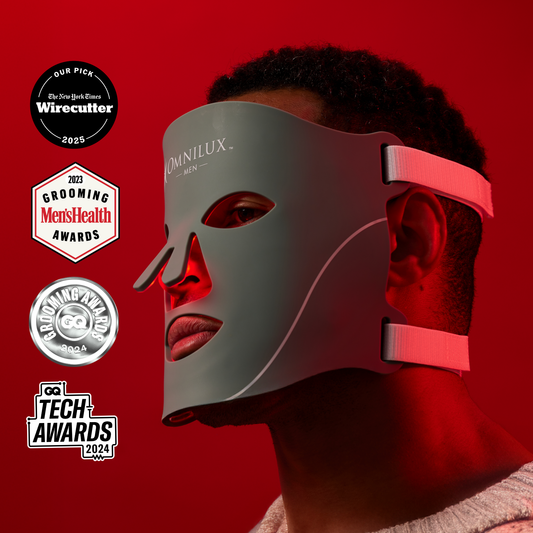
Skincare Awareness: Interview With World-Renowned Dermatologist, Dr. Rox Anderson
As a brand that develops efficacious light-based therapies rooted in scientific research, we wanted to dive deeper and provide our readers access to one of the world's top dermatologists (a legend, really) and researchers in the field of phototherapy. In honor of Skincare Awareness Month, we sat down with Dr. Rox Anderson, MD, of the Wellman Center for Photomedicine at Massachusetts General Hospital to talk about light-based clinical research and ways to improve both the look and function of your skin.
But before we jump into the Q&A, let's take a quick moment to meet Dr. Anderson!
Dr. Anderson graduated from MIT, and then received his MD degree magna cum laude from the joint MIT-Harvard medical program, Health Sciences and Technology. After completing his dermatology residency and an NIH research fellowship at Harvard, he joined the faculty where he is now Harvard Medical School Professor in dermatology, Director of the Wellman Center for Photomedicine; and adjunct Professor of Health Sciences and Technology at MIT. Dr. Anderson conceived and developed many of the non-scarring laser treatments now widely used in medical care. These include treatments for birthmarks, microvascular and pigmented lesions, tattoo and permanent hair removal. He has also contributed to treatment for vocal cords, kidney stones, glaucoma, heart disease, photodynamic therapy for cancer and acne, and optical diagnostics.
Dr. Anderson's research has advanced the basic knowledge of human skin photobiology, drug photosensitization mechanisms, tissue optics, and laser-tissue interactions. In addition to research at the Wellman Center, he practices dermatology at Massachusetts General Hospital and teaches at Harvard and MIT. Active research includes diagnostic tissue imaging and spectroscopy, photodynamic therapy, mechanisms of selective laser-tissue interactions, adipose tissue biology and novel therapy for skin disorders. Dr. Anderson has been awarded over 60 national and international patents, and has co-authored over 250 scientific books and papers.
The work that Dr. Anderson and his team have done, and continue to do, is life-changing, and our team was incredibly honored and excited for the opportunity to conduct this interview. Glow Getters, are you ready to dive in?
Q: The Wellman Center has been using LED technology, including Omnilux devices, for almost 20 years. Can you elaborate on why Wellman uses LED technology?
Dr. Anderson: At Wellman, we mainly use LED sources, including Omnilux devices, for our research programs on photo biomodulation, acne treatment, and photodynamic therapy acne. They are versatile (wavelength, position and shape can easily be changed), powerful and user-friendly. We have also used LED units as part of a special helmet in a treatment study for traumatic brain injury (TBI).

Q: Can you share any clinical research you are presently working on? Have there been any recent breakthroughs in phototherapy?
Dr. Anderson: Our TBI study used serial MRI imaging of brain during the first several days after head trauma, to show that photo biomodulation (PBM) causes a significant difference in brain healing after TBI. This was a prospective, double-blind, placebo-controlled study. It is the first proof that trans cranial PBM works. We are also studying PBM to enhance muscle strength, endurance, and reduce musculoskeletal injuries. We have found important differences in the doses of light and durations of effect for different wavelengths. This work is ongoing.
Q: What is the Fitzpatrick scale? And how do dermatologists use the Fitzpatrick scale in patient analysis and treatment?
Dr. Anderson: The Fitzpatrick skin types were invented by Thomas B Fitzpatrick, who was one of my mentors in dermatology long ago. Fitz needed a way to estimate how much light to give patients for treatment of psoriasis and other skin diseases. He based it on how easily people sunburn and tan after sun exposure. However, it became used broadly and often inappropriately to characterize skin color and other uses. We need a better system, as Fitz himself told me before he passed away. This is another thing we are actively working on now.
Q: What are the most common summer skin conditions vs winter skin conditions? How can LED help aid the treatment of these conditions?
Dr. Anderson: In winter, dry skin is a big deal, especially if you are among the many people with some form of eczema. The relative humidity is low — cold, dry wind is just not something most humans evolved with. A good daily moisturizer (with sunscreen if you are skiing) applied in the morning to exposed skin can prevent a lot of irritation. In summer, excessive sun exposure is probably the most common event for skin. Wear a sunscreen and/or protective clothing. There is some evidence that yellow, red, or near infrared (near 800nm) LED exposure has anti-inflammatory benefits for skin, at exposure doses of about 3-10 J/cm2 given every other day.
Q: What are important changes to look out for when doing a self-skin check?
Dr. Anderson: Skin self-exams, if you do them well, can catch early skin cancer or pre-cancerous lesions. I like the “ugly duckling” analogy — look for something that just doesn’t seem normal. If you are fair skinned, have red hair and freckles, or a family history of melanoma skin cancer, you have higher risk and self-exams are particularly useful.

Q: And lastly, what is your #1 skincare advice to patients?
Dr. Anderson: Believe it or not, my #1 skin advice for most people is: trust Mother Nature and keep it simple. A moisturizer with sunscreen — preferably the mineral type — is plenty. Your skin is amazingly good at staying healthy without putting stuff on it, eating mega vitamins, etc. If there’s a problem, prevent or fix it — if not, leave it well alone.
And there you have it, Glow Getters! Thanks for reading - we hope you enjoyed the Q&A as much as we did. And of course a huge thank you to Dr. Anderson for taking the time to answer our questions and for the incredible work of the Wellman Center.







